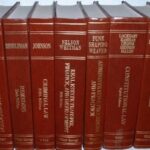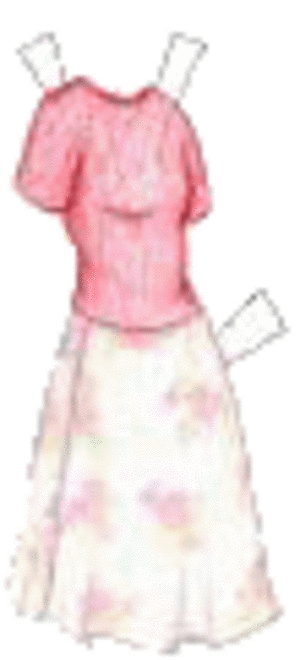Punctuation is simple. Right? There are clear rules to follow. Right? There is never any doubt of when to use a period (well, hardly ever). Question marks are entirely unambiguous in their meaning. Exclamation marks, parentheses, colons, and even semi-colons have reasonably well defined rules. There are some choices, for example the decision to use a semi-colon instead of a period, but these choices are bound by rules that are relatively simple and easy to understand. Then we have the comma. There are several relatively consistent guides or rules for comma use. I shall, presently, list most of these. However, modern usage departs from these rules so frequently that some of them appear to be mere suggestions. Nearly every writing guide written in the last twenty or so years has one form or another of the statement that the rules can be broken or that commas are used less frequently in modern writing.
If there are rules for comma use, rules for when and where they are to be used, then using them less frequently necessarily implies that theses rules are being broken. First, a very brief history note. Please bear with this because it is important to the final conclusions and recommendations, I promise. The forbearer of the comma is usually considered to be a mark (actually, a dot) that was introduced by Aristophanes, in the third century BCE, or so the Purdue Online Writing Lab and various histories of the development of Latin contend. The original intent had nothing to do with punctuation rules. The marks were instructions for those who were reciting verse, and dealt with the amount of breath (length of pause) between verses, or sentence fragments. Aristophanes introduced three marks to provide such instruction, each a dot, with different placement. The middle dot, midway between top and bottom evolved into the comma and indicated a short pause. This mark, when it became part of rules for punctuation, changed into a backslash (/) in about the 13th century and into its modern shape in the 16th century. (This history is adumbrated from several sources and more completely presented in the Wikepedia.) Again, I am not introducing this history to bore the reader, but to make a point that will follow at the end of this article. Remember the original meaning.
Here are the rules for use, briefly presented:
Commas are marks that are used in several contexts, aside from punctuation marks in writing. They are technical marks in computer programming and mathematical expressions. They have a relatively rigid set of rules in legal drafting. (Child, B., Drafting Legal Documents, 2nd ed., 1992) Our primary concern, of course, is for the writer. Commas are used to:
1. Set off introductory words, clauses, or phrases.
Yesterday, he attacked the gorilla. Today, he died. In an attempt to prove his point, he said something even stupider than before.
2. Set off independent clauses separated by the “coordinating” conjunctions: so, but, and, or, nor, for, yet.
He was hot, so he took off his shirt.
She appeared offended by his behavior, and left the room.
3. Separate nonessential clauses in the middle of a sentence.
Please bring me the shirt, although it is in tatters, on the table.
But note, this applies only to words or phrases that are not essential to the meaning of the sentence, when you can omit the word or phrase and the sentence still makes sense. It is “essential” when the phrase or word is a part of the meaning of the sentence which would either change of be nonsensical without it. For example, “Please bring me the shirt that is in tatters, on the table.” In the first example, the “tatters” is an unessential element. In the second instance, indicated by the word, “that” (which is a definite pronoun) the tatters are an essential and defining part of the meaning. “That” phrases, are never set off by commas. “Which” phrases, the indefinite pronoun, can be set off by commas and usually should be.
To add to the confusion, somewhat, unessential phrases are, essentially, “parenthetical.” So, can they be set off by ellipses? The answer is, “yes.” The distinction that I use is that the ellipses indicate that the phrase is somewhat more trivial than one set off by commas. Less attention is focused on it. It is a side comment. Another time that ellipses can be used in place of commas, in fact, must be, is when a comma would confuse the modifiers by implying that they are co-ordinate. For example, the sentence, “The dress was a riot of colors, yellow, red, blue, pink (shocking), and green.” In that instance, setting off “shocking” with commas would imply that it was a coordinate descriptor; the ellipses attach it to the word, “pink,” which is what it does modify.
4. Separate words, phrases, or clauses, in a series, if there are three or more of them.
After he was elected, the governor broke his promises to, lower taxes, decrease unemployment, and improve access to medical care.
5. Separate co-ordinate adjectives that describe the same noun. Co-ordinate adjectives are adjectives of equal value in the sense that they all modify the same word, and do so with technically equal status.
The middle linebacker was, large, fast, and mean. Note that with coordinate adjectives, they can be presented in any order without affecting the meaning of the sentence. The following is a non-coordinate sentence with adjectives that are not interchangeable without changing the meaning of the sentence.
He lived in a red brick house.
If the words were interchanged, it would subtly affect the meaning. They can be combined in the same sentence with the coordinate ones separated by a comma and the non-coordinate ones that are not, as in:
He lived in a large, red brick house.
6. Set off some coordinate phrases at the end of a sentence to indicate contrast in meaning, or that refer back to an earlier part of the sentence.
David sent a letter to the members, happily.
Note that if there is a possibility of confusion with respect to which noun (or pronoun) the adjective modifies, this construction cannot be used.
Bush called Cheney, crying piteously. (wrong)
This is a syntactically incorrect sentence because the modifier is ambiguous. It can be:
Bush, crying piteously, called Cheney.
The modifier could also be unequivocally attached to its object, such as:
Bush, who was crying piteously, called Cheney.
7. Set off geographical places, dates (except month and day), suffixes and degrees after names, and addresses (except between name and street number).
Birmingham, Alabama is a city of over half a million people.
Lori Taylor, PhD, is a stalwart “gatherite.”
George lives at 1704 Elm Drive, Birmingham, Alabama.
It is Wednesday, November 15, 2006.
8. Set off the main sentence from a quote.
This is discussed at length in a previous article. It refers to the separation of the quote, whether a complete sentence or not, from the main discourse.
Bush postured on the aircraft carrier, announcing, “Mission accomplished,” completely idiotically.
Note that “Mission accomplished is a complete sentence that is not accorded its own period. However, if I had left off the tempting descriptor, “completely idiotically,” the only period would be inside the quote.
Bush postured on the aircraft carrier, announcing, “Mission accomplished.”
9. Reduce difficulty in presenting strings of numbers by conventionally setting off sets of three, starting backwards from the last number to the left of the decimal point.
$1,000,000.00; $10,000,000.00; $100, 000, 000.00; $1,000,000,000.00
It would take four more zeroes, but only one more comma to begin to approach a fraction of the increase in the national debt in the last six years. Don’t those commas make it easier to understand the magnitude of such enormous figures? It would take more than commas for me to apprehend it, though.
10. Reduce possible confusion by directing the reader to pause, properly, organizing clauses and thought in order to understand the meaning of the sentences more easily.
WOW! Now here is one that leaves it all open and throws the “rules” into the land of ambiguity. Some version of this sentence can be found in every style manual beyond third grade level. What does it mean? Are there rules for breaking rules? Before I try to address this crucial instruction, I shall turn to the important set of rules governing when commas are not to be used. In fact, these rules are less ambiguous and more important to writing than those above.
All of the rules above are to be found in modern style manuals, not archaic and outdated sources. They are a loose compilation from highly respected workshops and manuals, such as the Purdue University writing lab, Strunk and White, etc. The point of that statement is to indicate that these are quite generally presented as modern usage rules, not a reiteration of outmoded and cast off archaisms. Nevertheless, you will nearly never see them punctiliously followed.
Part II
As important a part of comma use as rules for when to use it, are the rules for when not to use it. There are many sources of advice regarding this issue, some of them even good. Perhaps the most entertaining of which is: Richard Lederer & John Shore “Comma Sense: A Fun-damental Guide to Punctuation. St. Martin’s Press, 2005. The humor is a bit stretched and sometimes distracting, but, on the whole, it is probably the best one I have seen.* The very popular,” Eats Shoots and Leaves, The Zero Tolerance Approach to Punctuation” by Lynn Truss is not as good. The brilliant name says it all. Unfortunately, it has to because the book doesn’t. Although she gives a very good synopsis of rules and good recommendations, she simply doesn’t follow them in her own writing, which rather detracts from her impact.
First, probably the most inviolate ‘don’t’ of them all, is the dreaded ‘comma splice,’ also known as ‘comma error’ and, by English teachers as, “One more of these and you will fail the course.” The referent for this is the use of a comma in place of a period or a semi-colon to separate two complete sentences.
Fred was a poor writer, he wasn’t much of a reader, either. Wrong.
Note that either a period or a semi-colon could be argued for in this case. Personally, I would use a semi-colon, but then, I have an inexplicable affection for this mark and am on a campaign to broaden its use; but that’s another article. Also note that a conjunction, such as, ‘and’ or ‘but’ would change the punctuation, but, in this case, not the meaning of the sentence.
Fred was a poor writer, and he wasn’t much of a reader, either
Fred was a dog, he was full of fleas. Wrong.
Fred was a dog, and he was full of fleas. Right.
These sentences lead to the most inconsistent recommendations regarding comma use. In the first part of this set, I stated that commas should be used in front of conjunctions .when they introduce an independent clause. However, in modern usage, blind adherence to this rule is considered archaic and often not followed. But not all ifs, ands, and buts are equal (not to mention the rest of them). The following discussion is an overview of a relatively conservative and prescriptive stance. (From me? Wow, what a surprise!) However, I believe it is a good outline to follow keeping in mind that the punctuation is there to make the reading as clear and unambiguous as possible. If the author always examines the possible ways a sentence can be read with and without the commas or other punctuation, for that matter, a clue to the proper use should be found.
Should a comma come before a conjunction? Sometimes, yes; sometimes, no. As a general rule, all conjunctions (or, nor, so, for, but, yet, and) should be preceded by a comma when they introduce an independent clause and not when they introduce a dependent clause.
Independent clauses:
He was big and stupid, and she was attracted to him.
He wanted to take her out, or he wanted to take her in.
He was big, and he was stupid.
However, if the second clause is dependent, or subordinate to the first, a comma should (usually) not be used.
He was stupid because he was dropped on his head. (Dependent)
Maureen was not very bright, nor particularly attractive, either. (Independent)
Now, what about the sentence?
He was big and stupid so she was attracted to him.
In this sentence, the absence of a comma implies that she was attracted to him because he was big and stupid. If there were a comma (no matter how stupid this may sound), it could mean, “He was big and stupid, so what? She was still attracted to him.”
Unfortunately, even this relatively clear rule has exceptions that are at the discretion of the writer. In circumstances that do not require commas, the writer might choose to use one in order to provide some type of emphasis, such as contrast, or outrage.
She beat her husband with a baseball bat. (Simple description)
She beat her husband, with a baseball bat. (Emphasis, outrage, with or without an exclamation mark at the end.)
She won the race and was happy about it. (Description)
She lost the race, and was happy about it. (Contrast that is emphasized) Note that in both instances, the reader should pause before the clause to emphasize the contrast or outrage.
Just as there are exceptions to not using it before dependent clauses, there is discretion in the instruction to use it before independent clauses. Some editors simply don’t like this use, particularly before the word, ‘and.’ My recommendation? Read the sentence to yourself, see whether the pause is consistent with the rhythm of your read; err in the direction of using it, but allow yourself the luxury of omitting it when the rhythm suggests that a pause would be disruptive to the flow, sound, or meaning of the sentence. In other words, use the old ‘Aristophanes’ test. It indicates a pause.
However, there is another circumstance in which the comma before the word, ‘and’ is considered optional by some sources. That is when it precedes the last item in a list of three or more items. Forget the option. It should always be used, unless the last two items enjoy some special relation to each other. Its absence implies this relation.
We had sausage, eggs, bread and butter. (Correct-if…)
The above sentence is correct if the butter is applied only to the bread and was not a separate item.
There are alternative ways in which to show this relation, for example:
We had sausage, eggs, and bread and butter.
In this sentence, the relation is explicit.
We had sausage, eggs, bread and orange juice. (Wrong)
The comma before the ‘and’ is not optional, no matter what your sixth grade teacher taught you. .There is no situation in which the presence of the comma will create ambiguity. There are many situations in which its absence can cause confusion.
Recall the rule that essential phrases are not set off by commas but non-essential phrases are? A simple example concerning articles is very helpful in understanding the principles of this rule. The difference in meaning between ‘which’ and ‘that.’
‘Which’ is an indefinite article that introduces clauses that are not a part of the main statement of the sentence. ‘That’ is a definite article that always defines a significant feature of the sentence. ‘That’ clauses are virtually never set off by commas; ‘Which’ clauses generally are.
I threw back all of the fish that were under six inches in length.
I threw back all of the fish, which were under six inches in length.
The first sentence above leaves the listener with some hope that there will be fish for dinner. There is at least an implication that there were some fish that were over six inches in length and not thrown back. The second sentence states that all of the fish were thrown back and that they happened to be small. ‘That’ directs and defines. ‘Which’ is an ancillary description.
Bring me all the books on the table that are red,” directs the listener to select based on the color. It is an essential part of the meaning of the sentence. “Bring me all the books on the table, which are red,” would cause the listener to do exactly the same thing as, “Bring me all the books on the table.” The fact that they are all red, is incidental. The essential phrase, in this case indicated by the article, ‘that,’ is never set off by commas. The non-essential phrase, indicated here by the ‘which’ is, and generally should be, set off by commas.
The confusion concerning the use of a comma, particularly before the word ‘and,’ I believe, derives from thinking of the rule in simplistic terms. It is not possible to issue a simple instruction to use or not use before conjunctions because it depends entirely on the circumstance and the meaning of the sentence. A comma can be used to impart special meaning at the discretion of the writer, as above, even when the usual rule is not to use it in that construction. Remember the brief history lesson in part I of the comma saga? The predecessor of the comma was a sign to the reader to pause for a defined length of time (measured by breaths). Well, that concept is reemerging, in a sense. If you think about the rules, and particularly the exceptions just described, you can almost summarize them by viewing the use of the comma to indicate a pause in the read. Emphasis, contrast, independent clauses all, when read aloud (or to oneself) indicate a pause. Perhaps that is not definitive. Certainly it does not give sufficient instruction to the writer to know when to and when not to use a comma, but it is definitely a helpful concept and, when followed, won’t lead the writer astray too often.
OK, those rules require some thought and practice before they will become automatic in writing. They are not simple to apply, even though the concepts behind them are consistent and reasonable. There are some rules, however, that are very straightforward. All of them contribute to clarity of the writing and misuse of these rules leads to ambiguity. With some redundancy, I shall give a brief list of these rules. It is not exhaustive but, then, this is not a complete textbook, either.
1) The comma splice, as above. (DON’T DO IT! NO EXCEPTIONS.)
2) Do not use a comma to separate the subject from the verb.
The big dog, is the one to bet on in a fight. (Wrong)
3) Do not separate two verbs, or verb clauses in a predicate with a COMMA.
We placed our bets on the small dog, and sat down to watch. (Wrong)
4) Do not separate two nouns or noun phrases in either a subject or a predicate with commas.
The man, and his wife bet on the wrong dog. (Wrong)
The man, and his wife, bet on the wrong horse, and the wrong dog. (Wrong times three)
Overall summary? Generally follow the rules as explicated in both parts of this article. If there are ambiguous circumstances that do not neatly fit into the above rules, first check to see whether the inclusion (or exclusion) of a comma reduces ambiguity, as in the marvelous title, “Eats Shoots and Leaves.” Second, see whether the sentence has a normal pause in the place where the comma is contemplated.
It is easy to make errors due to old habits in writing. If I type quickly, I will usually find three or four extra commas per page. I wrote this quickly, but I just reread it, also quickly. I found only one superfluous comma, but I would bet money I overlooked some. Find them; it’s a good exercise.
————————————————————————
*This book has one of my favorite quotes, and, although this is not about commas, but about the importance of punctuation in general, I cannot resist reprinting this example:
‘The butler stood in the doorway and called the guests names’; ‘The butler stood in the doorway and called the guests’ names.’
Contemplate the difference in meaning an apostrophe can make.






